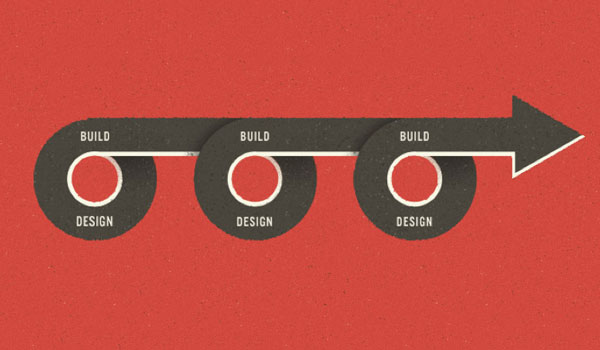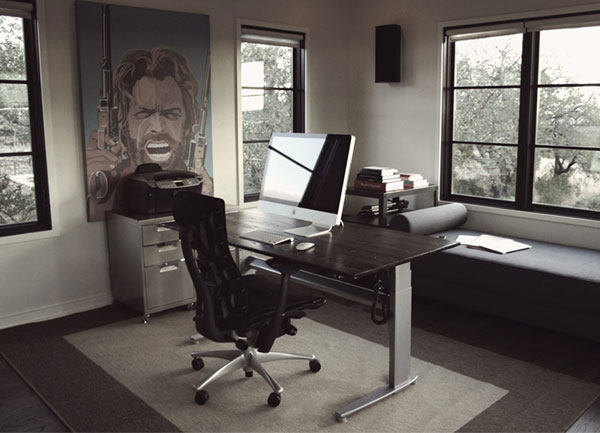One Minute With…
Trent Walton

Hi Trent, thanks for taking time to chat with One Minute With. Tell us a little bit about yourself and your work.
Howdy! I’m Trent. I work as 1/3 of Paravel with two of my best friends based out of the Texas Hill Country. I’m a husband and father of a 1 year old little dude named Henry. Oh, and my wife had to put me on a font allowance.
Walk us through a typical day in the life of Trent Walton.
Up at around 6:00 without an alarm, unless you count the 1 year old. I start with a big breakfast, then some exercise, and usually land in the office between 8:00 and 9:00. We just moved into a new home. I love it. The office is above the garage with the only door being an external one, so it helps me keep work time separate.
Over the next hour I’m joined by my cohorts in our campfire chat room, all of us cleaning out inboxes and charting out priorities for the day. My favorite thing about my work is that from this point forward days vary greatly. Sometimes I’m writing and planning, others I’m coding or designing. I try to take a nice long lunch hour so I can enter the rest of my day (that lasts till about 5:00 or 6:00) with clear focus on one or two larger tasks. Occasionally, I’ll work evenings if I want to finish a personal project, of if a deadline gets tight.

How did you get into design? Was there a defining point in your career, and if so, how did it shape you as a designer?
I’ve always been focused on the web, and began to take web design as a career more seriously when I saw that technologies were evolving to give designers more control over things like layout and type. Early on, I was just happy to see how much could be achieved when abandoning table-based layouts.
Going back further, I grew up around American muscle cars. I spent a great deal of time at races and swap meets and became obsessed with the design identities tied to the scene. I’d buy car badges, hood ornaments, and manuals just because they looked cool. I think that played a formative role in my design sensibilities and love for type.

How do you approach a new project? What’s your creative process like?
It’s different every time, but the projects I think turn out best are collaborative. I am usually in some version of a project management role, so I really begin by focusing more on the talent and personalities involved (clients and contractors). Paying attention to things like work environment, camaraderie, and communication (that aren’t usually project deliverables) makes everything better. Aside from that, we do a lot of sketching & candid arguing and I wouldn’t have it any other way.

On your site, you’re constantly experimenting with all-new web technologies and practices, from responsive web design all the way down to CSS hyphenation. Do you view yourself as a designer who also develops, a developer who also designs, or in a carefully-straddled middle-ground? If you give up one of the two, which would it be, and why?
It’s hard for me to imagine separating the two. I call myself a web designer, and I try to be proficient at whatever it takes to make what I want (or what is needed). It’s nice to be able to conceptualize and execute. That being said, It’s also nice to have friends who are more talented than you are so you can get help along the way.
On OneMinuteWith, I talk to a lot of designers about self-initiated projects. With Paravel’s work however, everyone else is effectively blown out the water – You’ve created projects such as The Many Faces Of, Lettering.js, FitText, and ATX Web Show, to name but a few. How much of your work is self-initiated projects, and how much is client work? Is there one you prefer over the other, and why?
Client work is always there, but the amount comes in waves. From the beginning, we’ve had the goal at Paravel to do what we love. I find that what you share online is often what you’ll get hired to do. So, if you show people that you’re good doing rush jobs and work that doesn’t require innovation, then that’s probably what you’ll be hired to do. We try to take jobs that don’t have a clear point B and require newer technologies. Then, when we have to build tools to aid us in our efforts (like Lettering.js or FitText) we share them.

If, in some Freaky Friday-like situation, you could live the life of another designer, illustrator or creative, for a day, who would it be, and why?
I think I’d like to set further outside the ‘creative’ file drawer and switch with someone who gets to work outside. I’d love to spend a day as a farmer or a rancher. I think life/nature has a timing that is artificially accelerated within the walls of my office. I’d love to do some work where content streams and email priority levels don’t impact the task at hand.
What design tools could you not live without?
I buy graph paper and pens in bulk. I love Coda, and hope there’s a version 2 on the horizon. Web-based tools like Dropbox for file storage, Harvest for accounting & time tracking, and Typecast App for typesetting & design have each equaled a quality of life upgrade ‘round these parts.

And finally, what tips would you give to anybody who is looking to get started in design or typography?
Focus on the basics. I’m always learning, and I think a common thread has been that I’m always surprised to realize how carefully considered the simplest elements can (and probably should) be. Thinking about type down to details like a baseline grid and clear hierarchy has become central to my process, while any random photoshop technique regularly proves to be less useful and applicable over time.